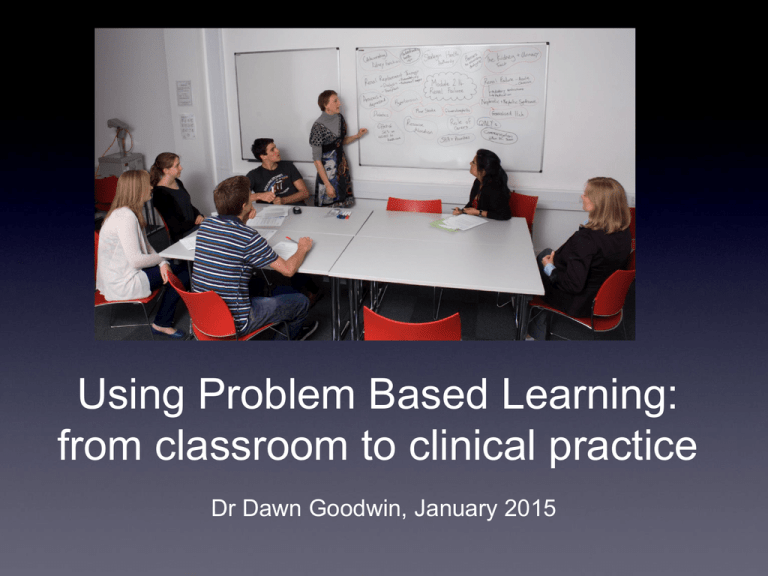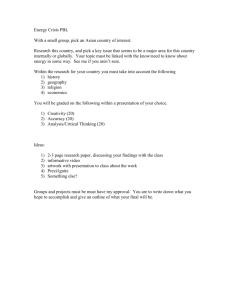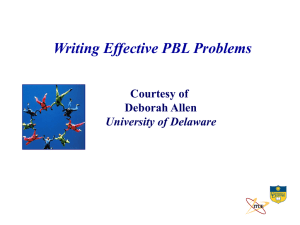Using Problem Based Learning: from classroom to clinical practice
advertisement

Using Problem Based Learning: from classroom to clinical practice Dr Dawn Goodwin, January 2015 What is PBL? ‘… an instructional (and curricular) learner-centred approach that empowers learners to conduct research, integrate theory and practice, and apply knowledge and skills to develop a viable solution to a defined problem. Critical to the success of the approach is the selection of ill-structured problems (often interdisciplinary) and a tutor who guides the learning process…’ (Savery, 2006) ‘… focused, experiential learning organized around the investigation and resolution of messy, real-world problems’ (Torp and Sage, 2002) Key characteristics of PBL • Students must have responsibility for their own learning. • The problem scenarios should be complex. • Learning should be integrated from a wide range of disciplines or subjects. • Collaboration is essential. • Self-study must be applied back to the problem. • A closing analysis of what has been learned is critical. • Self and peer assessment should be regularly undertaken. How PBL works in a structured curriculum Supported by…. • Tutor/facilitator input • Recommended resources • Lectures/workshops/other educational activities • Clinical practice Year 2 SSM2 Self study Hospital and community placements Lectures PBL Recommended resources Clinical skills Communication skills CALC Year 3 and 4 SSM Evidence, Research and Critical Analysis PBL 3&4 Clinical teaching Self study Rotation Electives after finals Lectures Case presentations Finals at end of Year 4 PPVE Case Analysis 7 Step Process • A methodical and detailed way of dissecting the scenario to identify all the required areas of learning, discussing students' existing knowledge resulting in a formulation of student learning objectives. • A modified version of the Maastricht '7 steps' approach (Schmidt, H (1983) Problem based learning: rationale and description. Medical Education, 17(1): 11-16). 1. Obtain scenario overview (read scenario and grasp its meaning, clarify terms and concepts) 2. Explore the scenario in detail (listing all the learning issues on the board) 3. Discuss prior knowledge (and how this may explain the scenario) 4. Sift and sort learning issues into curricular themes 5. Construct learning objectives 6. Self study 7. Feedback, discuss and evaluate ‘Sift and Sort’ Challenges of PBL for students • Constructing learning objectives requires problem solving skills and clarity of thought • Group work demands an ability to work within a team, communication and debating skills • Independent study requires good time management, organisation and discipline • Articulating knowledge needs confidence, good recall and concise descriptions • Students bear the responsibility for learning and have to manage the gaps and uncertainties in knowledge Challenges of PBL for tutors • Not to deliver information • To guide but not determine the process and learning outcomes • To manage group dynamics and ensure everyone's participation in all aspects of the process • Develop an ability to facilitate and advance discussions in areas outside one's own expertise Examples: 2nd Year – scenario, 3rd Year – real patient How might PBL work in your educational setting? Things to consider… Relationship with curriculum and assessment Real or constructed ‘problem’? Expected level of students’ self-direction Who will facilitate? (Expert? Non-expert?)








